The Biofuels Celebration Station
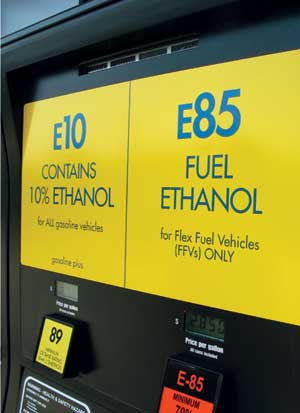
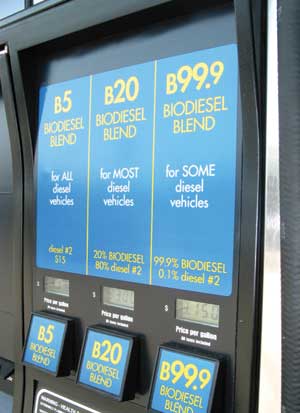
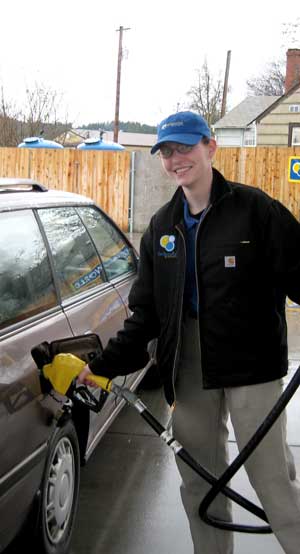
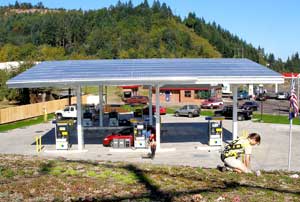
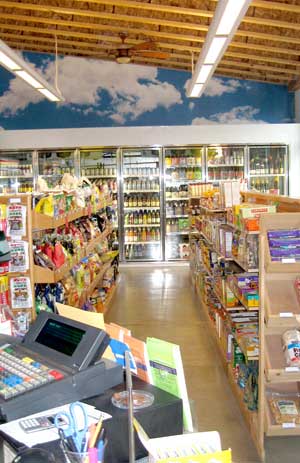
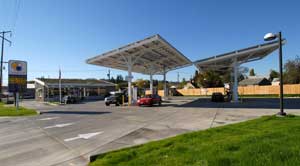

May 25, 2007
BY Ron Kotrba
If the only distinctive feature of SeQuential Biofuels' retail gas station and convenience store was that it offered an array of biofuel blends, this by itself would be something to celebrate. Unfortunately, that sight alone is far too rare. Aptly named the Biofuels Station, this one-of-a-kind store five miles outside of Eugene, Ore., sells five different blends of ethanol and biodiesel: E10, E85, B5, B20 and B99.9. SeQuential Biofuels is a biodiesel marketer, distributor and joint-owner of SeQuential-Pacific Biodiesel, a 1 MMgy production plant-soon to be a 5 MMgy plant-in Oregon that uses waste cooking oils as a partial feedstock. While this is the only station SeQuential Biofuels owns, the marketer's branded biofuels products are sold at 33 locations in and around the Eugene and Portland areas.
Retail stations generally service passenger vehicles. "In the United States, 96 [percent] to 97 percent of passenger vehicles are gasoline-powered-not diesel or flex-fueled, but straight gasoline-powered," says Tomas Endicott, cofounder and managing board member of SeQuential Biofuels. Endicott is also the company's policy and marketing lead. "Clearly, the largest-selling fuel is E10," he says. "It's interesting that it's a foot in the biofuels door. It's not huge, but it introduces the customers to the seamless nature of E10 gasoline." The renewable fuel is blended into nearly half of all the gasoline sold in the United States at various low-level blends up to 10 percent. As far as biodiesel is concerned, Endicott says his part of the country perhaps is more familiar with the higher blends than any other region. "Oregon has some of the best availability of B20 and B99 in the nation," he tells Biodiesel Magazine.
Although offering five different biofuels blends is unique, it's not the only feature that sets the Biofuels Station apart from other typical retail gas stations. There's much more innovations to celebration at this particular pumping station. "Most people's perceptions of gas stations are that they are dirty, dingy places, but that's not always true," says Ian Hill, cofounder of SeQuential Biofuels. Hill is also a managing board member of the company and its development lead. He has been instrumental in the conceptualization of this biofuels-only station, a design that treads on the environment lightly and takes energy consumption seriously.
Biofuels Station Origin
The history of the location where the SeQuential Biofuels' retail station sits is not an uncommon story. "It started in 1988," Hill says. "There was a gas station, and the surrounding neighborhood began to complain that their water tasted like gasoline." Drinking water from the surrounding neighborhood came from a well in close proximity to the gas station. The department of environmental quality began its investigation immediately, which ultimately found that leaky dispensers and fuel lines-not faulty underground storage tanks, as is often the case-were the culprit. "The owner declared bankruptcy, and the station closed in 1989," Hill says. "Then it became a toxic hot potato. It went through three owners, and eventually foreclosure."
Oregon's Lane County took possession of the poisoned land. After some time, SeQuential Biofuels began participating in talks with Lane County and various agencies. The biodiesel marketer wanted a station to call its own-one that was more environmentally sound than most. With funds from the U.S. EPA, the site is still undergoing cleanup and is now only a year away from getting the environmental stamp of approval stating "no further action" needed, meaning the remediation was successful. SeQuential Biofuels has a lease-purchase agreement with the county, which still owns the land. When the site is given the all-clear, the biofuels company has the option of taking over ownership.
The idea for this special station to be situated on a remediated brownfield area was to blend green-building practices and sustainable development with the more conventional concepts of traditional refueling and convenience store combinations. "We're doing two things here," Endicott says. "We're creating a more sustainable, renewable space, and then we're inviting people in by giving the customer what they really want. We're educating and adapting." The company, and the knowledgeable and progressive college students who work as attendants at the Eugene-based Biofuels Station, are educating people about renewable fuels and sustainability. At the same time, the company is adapting to its customers' desires.
"We first came up with the concept after spending years as biodiesel enthusiasts," Hill says. "Speaking with customers and consumers, we realized that there's a real desire for a different fueling experience outside of the routine. Consumers want to have an experience in which they feel good about how their dollars are spent. So it all started by articulating a vision, vis-à-vis a business plan."
Conveniently, Hill's mother owns her own architecture firm, so when it came time to realize green-building concepts, she was instrumental. The general contractor, Pacific Northern Environmental Corp., was chosen for its expertise in the arena of sustainable development. Also, significant efforts were made to procure regionally produced building materials.
Powering Up
SeQuential Biofuels wasn't interested in trying to create a sustainable station that utilized power derived from coal. Therefore, the canopy to be situated over the fuel dispensers, which most all fueling stations have, was built with 244 solar panels to provide up to 33 kilowatts, or up to 50 percent, of the station's electrical power needs on an annual basis. Energy Design Co., an Oregon-based company, installed the solar array. "To make the economics work, we needed a partner to realize the tax credits offered, so Easily Bros. LLC bought the system and we have a power agreement with them," Hill tells Biodiesel Magazine. The station's remaining electrical needs are provided by wind power bought at a premium from a local power provider.
The building itself was created with passive solar design in mind. This means it utilizes geographic positioning to the fullest for its specific location relative to the sun in any given season. Specially designed Clerestory windows, louvers and heat-absorbing walls all maximize the free and environmentally friendly solar energy. "We haven't had to turn on the [heating, ventilating and air conditioning] system for the last three months," Hill says. However, because the station just opened in September 2006, the design hasn't been tested year-round yet. "Our goal is to never have to turn the HVAC system on," he says. In the winter, sunshine on the thermal mass wall, which is concrete, soaks up the heat. At night, the heat from the thermal mass wall is slowly transferred into the store to keep it warm, he says.
Celebrating Life, Clean Water
The impressiveness of this store doesn't stop here. The roof of the Biofuels Station, which is built on a 12-by-2 slope-fully visible to passersby-is alive. A living roof adorns the top of the convenience store, and its six inches of soil are loaded with 5,000 individual plants, including native Oregon species of low-growing succulents, bulbs for seasonal colors and wildflowers. The living roof has several beneficial environmental effects, including bioswales that are landscaped into the design to help filter surface water runoff with "bioremediating" plants. "The purpose of the green roof is to slow the movement of the storm water, so we don't have a big rush of water, or flash floods," says Hill, who explains that the water-channeling bioswales can hold up to a year's worth of runoff water. "[Our system] also cleans the water, which generally dumps into our lakes, rivers and streams." The progressive system also reduces storm water service fees, making it economical as well as eco-friendly. The roof also provides excellent insulation with the soil and foliage, keeping the store cool in the summer and warm in the winter. It also reduces the heat island effect, a contributor to global warming.
Aside from all of the attractions built into this store-the five blends of biofuels, the solar array, passive solar design, the living roof and eco-sensitive water system-the products in the store are one of the customers most favored features of the Biofuels Station. "Traditionally, convenience stores offer low-quality food," Endicott says. "We serve about a 60-to-40 mix of natural foods and conventional foods-like kettle-cooked chips and Blue Sky soda. Blue Sky is made with organic ingredients and lacks additives like high-fructose corn syrup. "We sell a good mix of locally made micro brews, but at the same time, we sell 12-packs of Pabst Blue Ribbon," Endicott says. Snack maker Kettle Foods provides SeQuential-Pacific Biodiesel with some of its used cooking oils for biodiesel production. A Sweet Life Patisserie exists in an annex inside the convenience store, as well. This is a local coffee shop and bakery, which, as its name implies, offers gourmet sweets among other things.
An Earth Day Celebration was held at the Biofuels Station on April 21, one day prior to the eco-holiday. Unfortunately it was a rainy day, which suppressed the expected turnout. "It was a classic western Oregon Earth Day," Hill says. Oregonians aren't guaranteed sunshine until July, Endicott explains.
SeQuential Biofuels has received a sizable grant from the city of Portland to build a second Biofuels Station there. A comment box in the Eugene station receives one particular suggestion more so than any other: Please build more.
"Our goal is to roll out two more this year," Endicott says. With a grant in hand from the city of Portland, one station is sure to be built there, and the other may be built in either the Portland or Eugene areas. Once the sites are selected, Hill and Endicott say each of the refueling centers will only take a few months to construct after all the permits are secured because the knowledge base is in place. "Our design/build team is more educated now," Hill says, referring to the unknowns associated with an Alpha site like the Eugene-based Biofuels Station. "Having gone through the first one, there will be much less head-scratching going on."
Ron Kotrba is a Biodiesel Magazine staff writer. Reach him at rkotrba@bbibiofuels.com or (701) 746-8385.
Retail stations generally service passenger vehicles. "In the United States, 96 [percent] to 97 percent of passenger vehicles are gasoline-powered-not diesel or flex-fueled, but straight gasoline-powered," says Tomas Endicott, cofounder and managing board member of SeQuential Biofuels. Endicott is also the company's policy and marketing lead. "Clearly, the largest-selling fuel is E10," he says. "It's interesting that it's a foot in the biofuels door. It's not huge, but it introduces the customers to the seamless nature of E10 gasoline." The renewable fuel is blended into nearly half of all the gasoline sold in the United States at various low-level blends up to 10 percent. As far as biodiesel is concerned, Endicott says his part of the country perhaps is more familiar with the higher blends than any other region. "Oregon has some of the best availability of B20 and B99 in the nation," he tells Biodiesel Magazine.
Although offering five different biofuels blends is unique, it's not the only feature that sets the Biofuels Station apart from other typical retail gas stations. There's much more innovations to celebration at this particular pumping station. "Most people's perceptions of gas stations are that they are dirty, dingy places, but that's not always true," says Ian Hill, cofounder of SeQuential Biofuels. Hill is also a managing board member of the company and its development lead. He has been instrumental in the conceptualization of this biofuels-only station, a design that treads on the environment lightly and takes energy consumption seriously.
Biofuels Station Origin
The history of the location where the SeQuential Biofuels' retail station sits is not an uncommon story. "It started in 1988," Hill says. "There was a gas station, and the surrounding neighborhood began to complain that their water tasted like gasoline." Drinking water from the surrounding neighborhood came from a well in close proximity to the gas station. The department of environmental quality began its investigation immediately, which ultimately found that leaky dispensers and fuel lines-not faulty underground storage tanks, as is often the case-were the culprit. "The owner declared bankruptcy, and the station closed in 1989," Hill says. "Then it became a toxic hot potato. It went through three owners, and eventually foreclosure."
Oregon's Lane County took possession of the poisoned land. After some time, SeQuential Biofuels began participating in talks with Lane County and various agencies. The biodiesel marketer wanted a station to call its own-one that was more environmentally sound than most. With funds from the U.S. EPA, the site is still undergoing cleanup and is now only a year away from getting the environmental stamp of approval stating "no further action" needed, meaning the remediation was successful. SeQuential Biofuels has a lease-purchase agreement with the county, which still owns the land. When the site is given the all-clear, the biofuels company has the option of taking over ownership.
The idea for this special station to be situated on a remediated brownfield area was to blend green-building practices and sustainable development with the more conventional concepts of traditional refueling and convenience store combinations. "We're doing two things here," Endicott says. "We're creating a more sustainable, renewable space, and then we're inviting people in by giving the customer what they really want. We're educating and adapting." The company, and the knowledgeable and progressive college students who work as attendants at the Eugene-based Biofuels Station, are educating people about renewable fuels and sustainability. At the same time, the company is adapting to its customers' desires.
"We first came up with the concept after spending years as biodiesel enthusiasts," Hill says. "Speaking with customers and consumers, we realized that there's a real desire for a different fueling experience outside of the routine. Consumers want to have an experience in which they feel good about how their dollars are spent. So it all started by articulating a vision, vis-à-vis a business plan."
Conveniently, Hill's mother owns her own architecture firm, so when it came time to realize green-building concepts, she was instrumental. The general contractor, Pacific Northern Environmental Corp., was chosen for its expertise in the arena of sustainable development. Also, significant efforts were made to procure regionally produced building materials.
Powering Up
SeQuential Biofuels wasn't interested in trying to create a sustainable station that utilized power derived from coal. Therefore, the canopy to be situated over the fuel dispensers, which most all fueling stations have, was built with 244 solar panels to provide up to 33 kilowatts, or up to 50 percent, of the station's electrical power needs on an annual basis. Energy Design Co., an Oregon-based company, installed the solar array. "To make the economics work, we needed a partner to realize the tax credits offered, so Easily Bros. LLC bought the system and we have a power agreement with them," Hill tells Biodiesel Magazine. The station's remaining electrical needs are provided by wind power bought at a premium from a local power provider.
The building itself was created with passive solar design in mind. This means it utilizes geographic positioning to the fullest for its specific location relative to the sun in any given season. Specially designed Clerestory windows, louvers and heat-absorbing walls all maximize the free and environmentally friendly solar energy. "We haven't had to turn on the [heating, ventilating and air conditioning] system for the last three months," Hill says. However, because the station just opened in September 2006, the design hasn't been tested year-round yet. "Our goal is to never have to turn the HVAC system on," he says. In the winter, sunshine on the thermal mass wall, which is concrete, soaks up the heat. At night, the heat from the thermal mass wall is slowly transferred into the store to keep it warm, he says.
Celebrating Life, Clean Water
The impressiveness of this store doesn't stop here. The roof of the Biofuels Station, which is built on a 12-by-2 slope-fully visible to passersby-is alive. A living roof adorns the top of the convenience store, and its six inches of soil are loaded with 5,000 individual plants, including native Oregon species of low-growing succulents, bulbs for seasonal colors and wildflowers. The living roof has several beneficial environmental effects, including bioswales that are landscaped into the design to help filter surface water runoff with "bioremediating" plants. "The purpose of the green roof is to slow the movement of the storm water, so we don't have a big rush of water, or flash floods," says Hill, who explains that the water-channeling bioswales can hold up to a year's worth of runoff water. "[Our system] also cleans the water, which generally dumps into our lakes, rivers and streams." The progressive system also reduces storm water service fees, making it economical as well as eco-friendly. The roof also provides excellent insulation with the soil and foliage, keeping the store cool in the summer and warm in the winter. It also reduces the heat island effect, a contributor to global warming.
Aside from all of the attractions built into this store-the five blends of biofuels, the solar array, passive solar design, the living roof and eco-sensitive water system-the products in the store are one of the customers most favored features of the Biofuels Station. "Traditionally, convenience stores offer low-quality food," Endicott says. "We serve about a 60-to-40 mix of natural foods and conventional foods-like kettle-cooked chips and Blue Sky soda. Blue Sky is made with organic ingredients and lacks additives like high-fructose corn syrup. "We sell a good mix of locally made micro brews, but at the same time, we sell 12-packs of Pabst Blue Ribbon," Endicott says. Snack maker Kettle Foods provides SeQuential-Pacific Biodiesel with some of its used cooking oils for biodiesel production. A Sweet Life Patisserie exists in an annex inside the convenience store, as well. This is a local coffee shop and bakery, which, as its name implies, offers gourmet sweets among other things.
An Earth Day Celebration was held at the Biofuels Station on April 21, one day prior to the eco-holiday. Unfortunately it was a rainy day, which suppressed the expected turnout. "It was a classic western Oregon Earth Day," Hill says. Oregonians aren't guaranteed sunshine until July, Endicott explains.
SeQuential Biofuels has received a sizable grant from the city of Portland to build a second Biofuels Station there. A comment box in the Eugene station receives one particular suggestion more so than any other: Please build more.
"Our goal is to roll out two more this year," Endicott says. With a grant in hand from the city of Portland, one station is sure to be built there, and the other may be built in either the Portland or Eugene areas. Once the sites are selected, Hill and Endicott say each of the refueling centers will only take a few months to construct after all the permits are secured because the knowledge base is in place. "Our design/build team is more educated now," Hill says, referring to the unknowns associated with an Alpha site like the Eugene-based Biofuels Station. "Having gone through the first one, there will be much less head-scratching going on."
Ron Kotrba is a Biodiesel Magazine staff writer. Reach him at rkotrba@bbibiofuels.com or (701) 746-8385.
Advertisement
Advertisement
Advertisement
Advertisement
Upcoming Events





